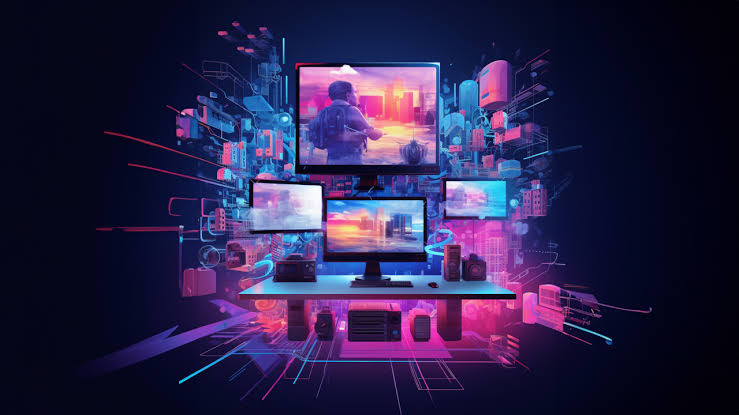What Is Live TV Coverage?
Live TV coverage refers to the real-time broadcast of events as they happen. Unlike pre-recorded shows or programs, live coverage offers unedited and instantaneous content to viewers. This immediacy makes it a preferred medium for significant events such as:
- Breaking news stories (e.g., elections, natural disasters, or major announcements)
- Sports tournaments like the FIFA World Cup or the Olympics
- Entertainment events, such as award shows and concerts
- Cultural or political happenings, such as royal weddings or inaugurations
This “live” nature of TV coverage creates a unique blend of spontaneity and authenticity, keeping audiences engaged and informed.
The Importance of Live TV Coverage
Live TV coverage is far more than just a form of entertainment. It holds immense value in various aspects of society:
1. Real-Time Information Dissemination
One of the primary benefits of live TV coverage is its ability to deliver information instantly. For instance, during crises like hurricanes or pandemics, live broadcasts provide critical updates that help people make informed decisions. The sense of immediacy ensures that news reaches a broad audience without delays.
2. A Platform for Shared Experiences
Live TV coverage fosters unity by creating shared moments among viewers. Sporting events, such as the Super Bowl or World Cup finals, bring millions of people together, transcending geographical and cultural barriers. These shared experiences enhance engagement, sparking discussions across various social platforms.
3. Transparency and Credibility
Live broadcasts often hold a higher degree of credibility since they are unedited. Audiences trust live coverage for its authenticity, especially during critical events like press conferences or debates. The absence of post-production editing lends a sense of transparency, reinforcing trust in the media.
The Evolution of Live TV Coverage
The concept of live broadcasting has undergone remarkable transformations since its inception. Let’s explore the key milestones that have shaped live TV coverage:
1. The Early Days of Live TV
In the mid-20th century, live TV was a groundbreaking innovation. Iconic moments, such as the moon landing in 1969, brought the world together in awe. These early broadcasts laid the foundation for modern live coverage, demonstrating its potential to captivate audiences.
2. Rise of Satellite Technology
The advent of satellite technology in the 1980s revolutionized live TV coverage by enabling global broadcasts. Events like the Olympics or international political summits could now be streamed worldwide, transforming how people consumed live media.
3. The Digital and Streaming Revolution
The 21st century witnessed a digital shift in live TV coverage. Platforms like YouTube Live, Facebook Live, and Twitch blurred the lines between traditional TV and online streaming. Audiences could now access live content across various devices, ensuring unparalleled convenience and reach.
4. High-Definition (HD) and 4K Broadcasting
With technological advancements, live coverage has become more immersive. High-definition and 4K broadcasting have enhanced the visual quality of live events, making them more engaging and lifelike for viewers.
The Role of Live TV Coverage in Marketing and Branding
Live TV coverage isn’t just about information and entertainment—it’s also a powerful marketing tool. Brands leverage live broadcasts to enhance visibility and connect with audiences in real-time. Here’s how:
1. Sponsorships and Advertisements
Advertisers capitalize on live events to showcase their products and services. For instance, the Super Bowl is renowned for its high-profile commercials that often generate as much buzz as the game itself.
2. Event Coverage for Brand Promotion
Live coverage of brand-sponsored events—such as product launches or charity initiatives—helps companies generate excitement and foster positive brand associations. Apple’s live-streamed product unveilings are a prime example.
3. Enhanced Engagement Through Interactive Features
Modern 실시간TV중계 often incorporate interactive elements, such as live polls, Q&A sessions, or social media integrations. These features engage viewers, creating memorable brand experiences.
Challenges Facing Live TV Coverage
While live TV coverage offers numerous benefits, it also faces significant challenges:
1. Technical Issues
Live broadcasting is vulnerable to technical glitches, such as poor audio quality, signal disruptions, or camera malfunctions. Such issues can impact the viewer experience and damage a network’s credibility.
2. Competition from Online Platforms
Streaming services and social media platforms are competing with traditional TV networks for live content. Platforms like Instagram Live and TikTok cater to younger audiences, drawing them away from conventional TV.
3. Rising Costs
Producing high-quality live broadcasts can be expensive, especially for large-scale events. Costs include equipment, personnel, satellite feeds, and production logistics, making it a significant investment for broadcasters.
Future Trends in Live TV Coverage
The future of live TV coverage is bright, driven by innovation and evolving viewer preferences. Here are some key trends shaping the industry:
1. Integration of Augmented Reality (AR) and Virtual Reality (VR)
AR and VR are set to revolutionize live coverage by offering immersive experiences. Imagine watching a live concert as if you were seated in the front row—all from the comfort of your home.
2. Personalized Content
With the help of artificial intelligence (AI), broadcasters can offer personalized live content based on viewer preferences. This trend ensures a more tailored and engaging experience for audiences.
3. Expansion of Live Streaming
As more people shift to online platforms, live streaming will continue to grow. Platforms like Twitch and YouTube Live are expanding beyond gaming, hosting events such as live interviews, webinars, and product launches.
4. Sustainability in Broadcasting
Environmental concerns are pushing broadcasters to adopt sustainable practices, such as using renewable energy or reducing waste during live productions. This shift aligns with the growing demand for eco-friendly initiatives in the media industry.
SEO Optimization and Live TV Coverage
To ensure maximum reach, content about live TV coverage must be optimized for search engines. Here are some SEO tips incorporated in this article:
- Strategic Use of Keywords: Keywords like “live TV coverage,” “real-time broadcasts,” and “future of live TV” have been strategically placed to boost discoverability.
- Engaging Headlines: Attention-grabbing headlines (like the one in this article) increase click-through rates (CTR).
- Structured Format: Subheadings, bullet points, and short paragraphs make the content reader-friendly and boost SEO performance.
- Internal and External Links: Adding links to related content enhances reader engagement and improves ranking.
- Mobile Optimization: Content must be easily readable on mobile devices, as a significant portion of web traffic comes from smartphones.
Conclusion
Live TV coverage remains a cornerstone of modern media, offering real-time updates and fostering global connections. From its humble beginnings to its present-day digital transformation, live broadcasting continues to captivate audiences with its immediacy, authenticity, and immersive experiences. As technology evolves, the future of live TV coverage promises even greater innovations, ensuring its relevance in the ever-changing media landscape.
Whether you’re a viewer, marketer, or media professional, live TV coverage offers countless opportunities to engage, inform, and inspire. As we move forward, the blend of traditional TV and digital advancements will shape a new era of live broadcasting, making it an indispensable part of our lives.






























